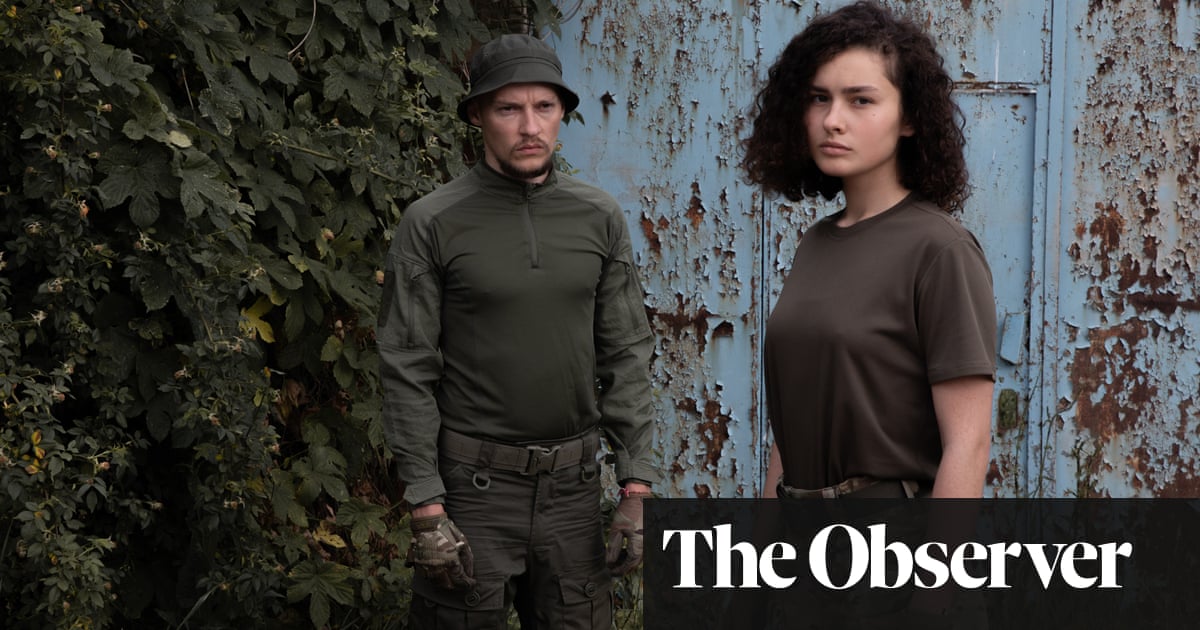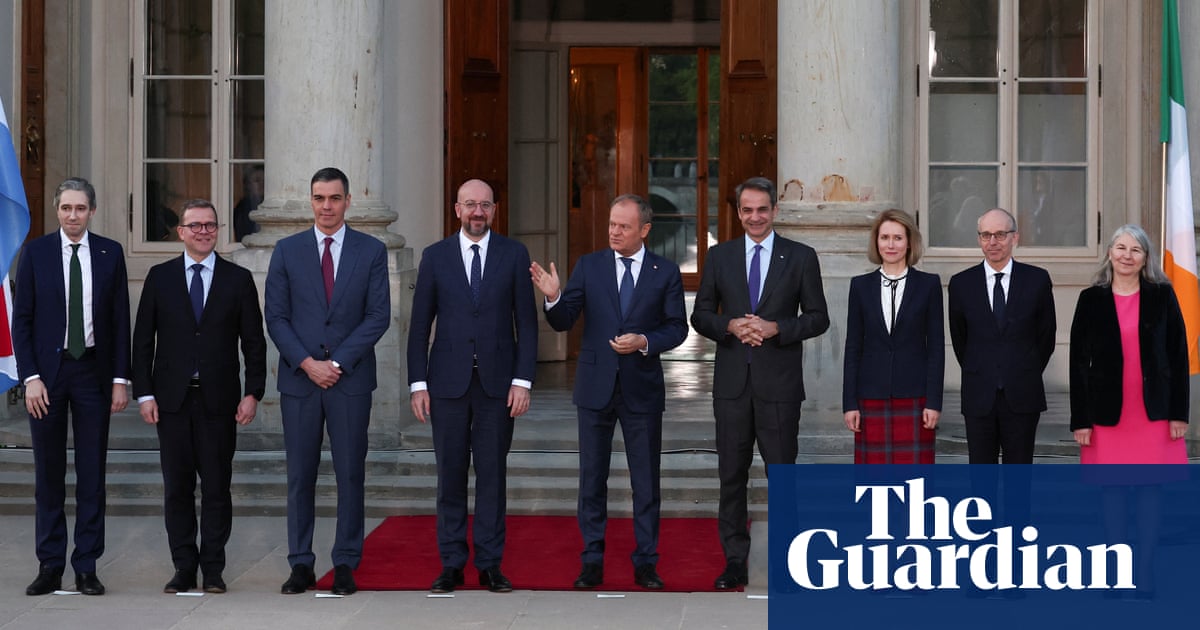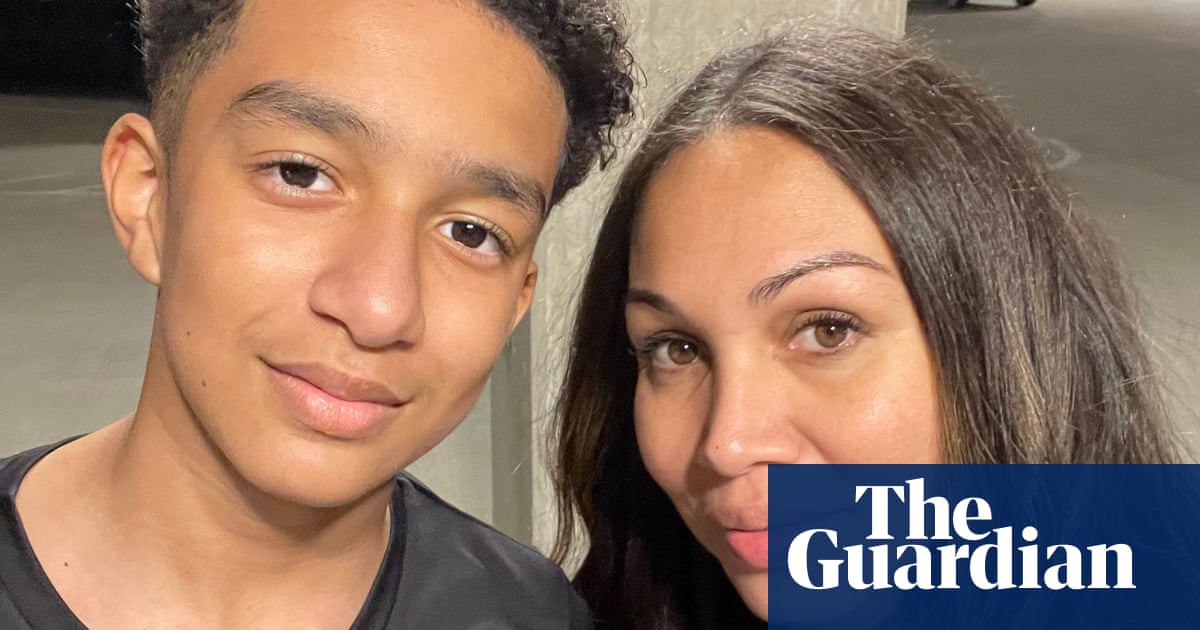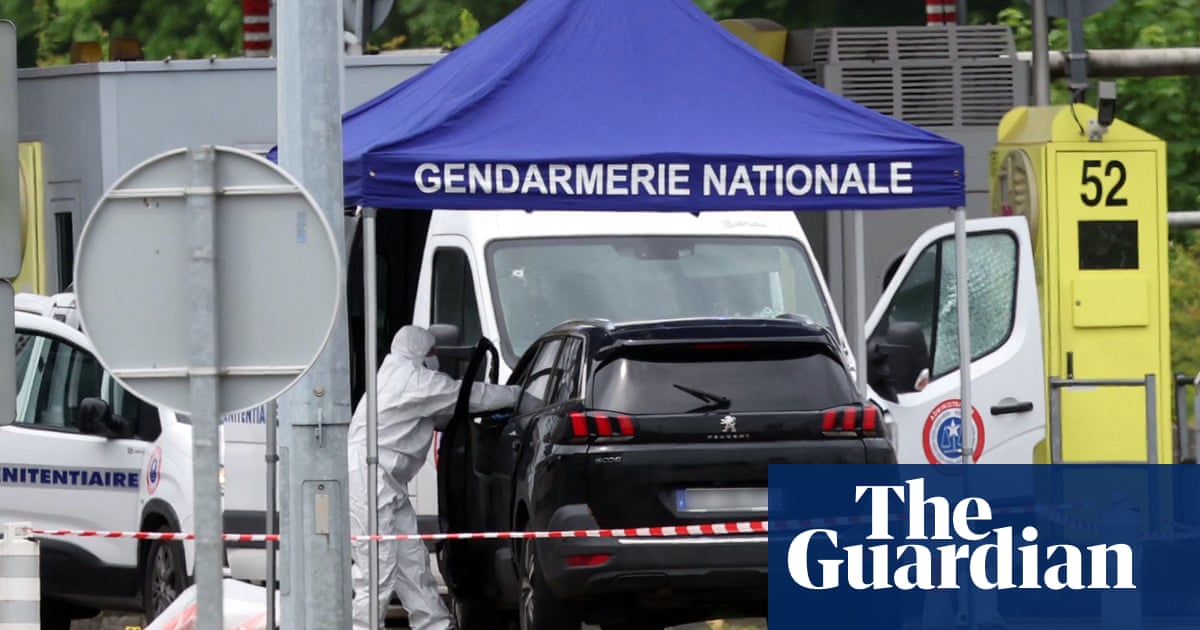The two Russian soldiers jogged across an apocalyptic landscape. They kept going, zigzagging over a vegetable patch. At the intersection between Hoholia and Travnia streets, the pair disappeared into a roofless brick building. Around them was the ruined town of Vovchansk. It was a smouldering hell of blackened blocks of flats and shell-dinted cottages.
Vovchansk, once home to about 17,000 people, is approximately three miles (5km) from the border with Russia in north-east Ukraine.
Russian troops seized it on the first day of Vladimir Putin’s full-scale February 2022 invasion. They retreated six months later, going back up the road to the Russian city of Belgorod. A month ago – on 10 May – they swept in again, taking over Vovchansk’s polyclinic and meat processing factory.
A brutal battle has raged ever since. Russian forces control the north of the city and a grid of shattered western districts. Ukrainian troops hold the centre. Their fiefdom includes half of Korelenka Street, with the Russians concealed in nearby basements. Fighting takes place house by house. Vovchansk now resembles a 21st-century mini Stalingrad, a place of death, rattling gunfire and close-quarters combat.
Everything is seen. “The sky is thick with drones. Our drones, their drones,” said Sasha, a 34-year-old lieutenant with Ukraine’s 57th Separate Motorised Infantry Brigade, while sitting in his HQ, located beyond the city. Neither side was able to use armoured vehicles inside Vovchansk because of kamikaze attacks. He said: “At the start, Russia sent in tanks. We destroyed them all in five minutes. If artillery doesn’t get you, drones will.”
Instead, small groups of infantry go in on foot. It is a perilous journey, through a wood and across the Vovcha river. Evacuating casualties was very difficult, Sasha said.
The Ukrainian military uses heavy-lift Vampire drones to airdrop supplies to forward posts: water, food, bullets. Clearing abandoned buildings was dangerous, with the enemy waiting in ambush, or just 200 metres away. “You never know when someone will open fire,” he said.
A bank of screens showed a live video feed of the city. The two Russians seen jogging earlier were inside their brown cottage. A closeup of the central market – located in a grey zone – presented a gruesome scene. The corpses of six Russian soldiers lay on the ground. “I feel no pity for them. They are constantly trying to take our territory. Russians are zombified people. If we don’t halt them, they will continue,” Sasha said.
A veteran of the grinding battle for Bakhmut – won by Russia in May 2023 – Sasha said Moscow was guilty of genocide. Wagner mercenaries went into a cellar and murdered a Ukrainian family, including children. “They shot everybody,” he said.
Street battles in Vovchansk were so intense that only experienced Ukrainian soldiers were deployed there, rotating among themselves in shifts. The Russians were a mixture of professionals and novices, he added.
The 57th scrambled to Vovchansk last month. The brigade’s commander, Maj Yuriy, said his men had pushed the Russians back and stabilised the situation. “A couple of days ago we stopped their advance here. Our task is to hold our positions and to inflict maximum losses. And then to gradually move forward,” he said. The Russians would typically attack about 7pm or 8pm, creeping forward as dusk fell.
Ukraine’s biggest challenge is Russian air power. Earlier last week, enemy combat planes dropped 36 guided bombs known as KABs in a 24 hour-period. Strikes were more frequent near the occupied eastern city of Avdiivka,
Sasha said. “If we had air defences to shoot down Russian bombers, the situation would have changed a long time ago. We wouldn’t be defending. We would be attacking,” he pointed out.
As well as Vovchansk, Russia has advanced towards the village of Lyptsi. Its two-pronged incursion piles pressure on Ukraine’s second city, Kharkiv, almost 19 miles away.
The Kremlin’s goal is to bring its big guns to within shelling range of Kharkiv in order to inflict daily misery on its 1 million-strong population – a repeat of 2022. An additional objective is to capture a road connecting Vovchansk to the city of Kupiansk, where Russian troops are closing in.
The latest Vovchansk offensive has forced Kyiv to divert forces from other parts of the frontline. Putin, though, might have miscalculated. With Kharkiv in peril, the Biden administration last month lifted its prohibition on the use of some US weapons inside Russian territory.
European allies followed suit, but White House restrictions on long-range ballistic missiles – which may knock out Russian military aerodromes – remain.
On Thursday, Joe Biden – attending D-day celebrations – reaffirmed US support for Ukraine and described Putin as a “tyrant bent on domination.” The US president, however, made clear that Kyiv could not strike Moscow or the Kremlin. It was allowed to attack “just across the border where they’re receiving significant fire from conventional weapons used by the Russians to go into Ukraine to kill Ukrainians”, Biden said.
Still, this local change helps. Previously, Russia amassed soldiers between about nine and 19 miles away from the Vovchansk district, beyond the range of Ukrainian drones. Ihor, a volunteer with the Barracuda drone surveillance group, said the invaders parked their armoured vehicles in an old Soviet collective farm and used the Russian town of Shebekino as a staging post. “Their logistics are now more difficult,” he said. “The new rule might be a gamechanger.”
On 1 June or the following day, Kyiv used a US-supplied Himars rocket system to destroy a Russian S-300/400 missile complex close to Belgorod. Images showed two wrecked launchers and a damaged command post.
Sasha said he would only call in a Himars strike if he could be certain to kill “20-30” Russians. “American rockets are expensive,” he added.
after newsletter promotion
More US weapons were arriving after Congress in April passed a $61bn military aid package, he said.
When the battle for Vovchansk began, thousands of residents fled the city. Some exited in private cars, others went on evacuation buses. A few left it too late.
Oleksandr Humaniuk, founder of the Rose in Hand charity, said he received desperate phone calls from 10 families living in basements in Russian-occupied streets. Rescue was impossible. A disabled man called him and said he wanted to get out but could only walk 50 metres.
“We also have calls from people where it’s a trap. A few locals support the Russians. They try and lure police in so the Russians shoot them,” Humaniuk said.
He said Russian soldiers kidnapped an unknown number of civilians, using them as a human shields and taking them across the border. They murdered others. Bodies lay in the streets. A man in a wheelchair was killed outside his house. Two volunteers and a policeman died trying to help civilians, he said.
Villagers living in the nearby countryside have also escaped. Oleksandr Lubianko said he was the last person to leave his hamlet home in Yuchenkove, west of Vovchansk. “We have no power, no water,” he said. He said he packed a single suitcase and set off across the fields, eventually coming across a Ukrainian soldier.
Lubianko had been feeding his neighbours’ goats, chickens and ducks. “I was sad to abandon them. Who knows if they will survive. The goat looked at me reproachfully,” he said.
His sister Nataliia Hrybenkova left the nearby village of Bilyi Kolodayaz. She described Russia’s occupation two years ago as “bearable”. “Masked gunmen came round and stole my husband’s Toyota car,” she recalled. “You were not allowed to speak Ukrainian. But if you kept your head down, it was OK.”
Russia’s latest bloody attack was much worse. “There is bombing all the time. There are airstrikes every day,” she said, adding that the kindergarten and mill were flattened.
Before the war, Vovchansk was a prosperous city. It had several big factories and a thriving agricultural sector. There were close ties with relatives and other Russians living in Belgorod.
“Now we are enemies. So many people have suffered, so many lives have been lost,” Hrybenkova said, speaking at a reception centre in Kharkiv for displaced and homeless people. “We became bums, almost. These are borrowed clothes,” she added wryly.
Valentina – who declined to give her surname – said she got out of Vovchansk in a car with her husband, daughter Anya and six-year-old grandson. They hid for several hours, before fleeing under gunfire.
“We saw planes and heard bombs. We crossed ourselves and hoped for the best,” she said. She previously worked in the city’s aggregate factory, which manufactured parts for helicopters and Kamaz lorries. “I did the detailing,” she explained.
Her daughter, a nurse, helped evacuate patients from the hospital. “We got everybody out in time,” Anya said. Soon afterwards, Russian soldiers stormed the building and set up on observation point in a medical department with a tower across the road.
What would happen now? “We don’t know,” Valentina said. “All I can tell you is the Russians thought it would be easy to take Vovchansk. They were wrong. Ukraine is fighting back.”



